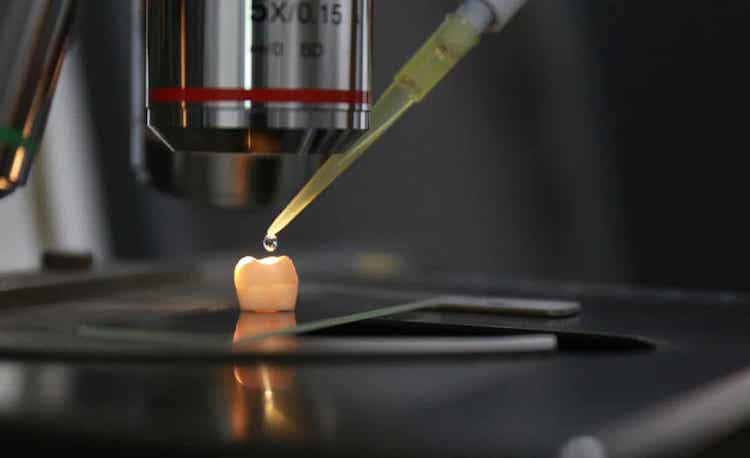 Photo by Zhejiang University / Science Advance
Photo by Zhejiang University / Science AdvanceDental fillings may soon be a thing of the past, thanks to this latest breakthrough from Chinese scientists.
Enamel is the mineralized substance that protects the surface of teeth. Though it is one of the toughest tissues in our bodies, it is prone to degradation over time particularly as a result of consistent exposure to certain acids that are found in food and drinks.
We currently use resins and ceramics to fill in deteriorated enamel, but these fillings can often become loose within just a few years of their placement—and with tooth decay being one of the most prevalent chronic diseases amongst humans, scientists have puzzled over how they can recreate enamel.
The researchers mixed calcium and phosphate ions—two minerals found in enamel—into an alcoholic solution with the organic compound trimethylamine and applied it to damaged tooth samples. Over the course of 48 hours, the gel helped to create a new layer of enamel about 3 micrometers thick.
The team now plans on testing their technique in the complex biological environment of the human mouth, and they plan on launching clinical trials sometime in the next one to two years.
“Our newly regenerated enamel has the same structure and similar mechanical properties as native enamel,” said Dr Zhaoming Liu, a co-author of the study which was published in the journal Science Advances this week.
“We hope to realize tooth enamel regrowth without using fillings which contain totally different materials and we hope, if all goes smoothly, to start trials in people within one to two years.”
Not only might it be possible to use the gel for the repair of decayed parts of a tooth, but it could be a preventative technique used to regenerate the protective enamel so decay is never again a problem.


Replies